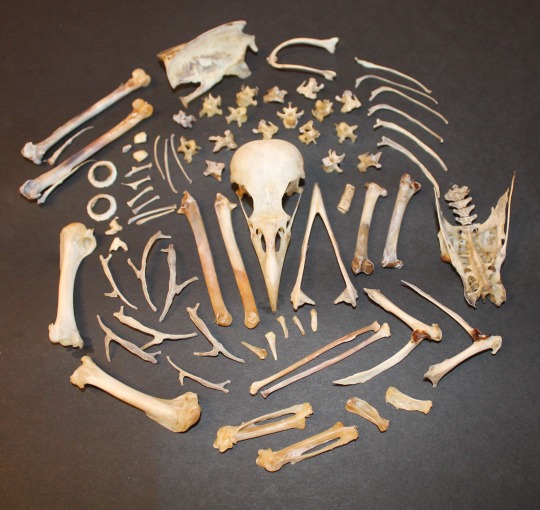Text
Up to our arms in success, the scent of cinnamon and honey. We create our own progress, the feel of luxe and money.
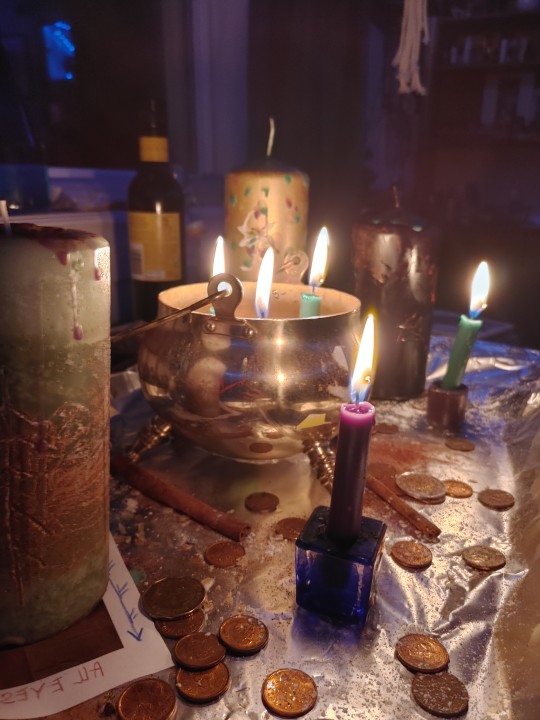


29 notes
·
View notes
Text
A healing bundle before being decommissioned for a new one. A great example of experimenting with rituals and spells you have read or researched and putting it into practice. This was incredibly successful and something I would do again.

17 notes
·
View notes
Text


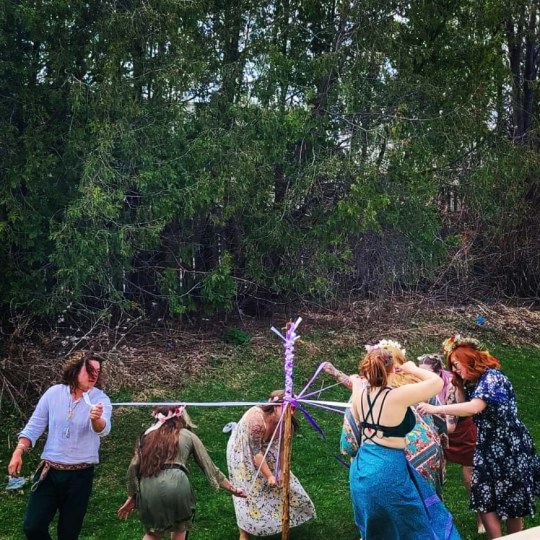
Walpurgisnacht & Beltane
Festivals of flight and fire, spent with friends, spent with witches, weather it was at the blackthorn tree of the otherworld, or the may pole of the folk.
15 notes
·
View notes
Text
Legends and Lore of Beltane
The Spring May Day
+ links to walpurgis article and the history of beltane - a bannock recipe- a solitary beltane ritual and an explanation for making a maypole

Beltane Walpurgis article
In many cultures, there are different legends and lore surrounding the Beltane season–after all, it's a time that marks fire and fertility, and the return of new life to the earth. look at some of the magical stories about this spring celebration.
Contacting the Spirit World

The Leanan Sidhe
Like Samhain, the holiday of Beltane is a time when the veil between the worlds is thin. Some traditions believe that this is a good time to contact the spirits, or to interact with the Fae. Be careful, though—if you visit the Faerie Realm, don't eat the food, our you'll be trapped there, much like Thomas the Rhymer was!
Farming and Livestock

Hystory of Beltane article
Some Irish dairy farmers hang a garland of green boughs over their door at Beltane. This will bring them great milk production from their cows during the coming summer. Also, driving your cattle between two Beltane bonfires helps protect your livestock from disease.

Bannocks recipe
Eating a special oatcake called a bannock or a Beltane cake ensured Scottish farmers abundance of their crops for the year. The cakes were baked the night before, and roasted in embers on a stone.
Maypoles

Haw to make a Maypole
The pious Puritans were outraged by the debauchery of Beltane celebrations. In fact, they made Maypoles illegal in the mid 1600s, and tried to put a halt to the "greenwood marriages" that frequently took place on May Eve. One pastor wrote that if "tenne maiden went to set (celebrate) May, nine of them came home gotten with childe."
Fertility

Birthing stone
According to a legend in parts of Wales and England, women who are trying to conceive should go out on May Eve—the last night of April—and find a "birthing stone," which is a large rock formation with a hole in the center. Walk through the hole, and you will conceive a child that night. If there is nothing like this near you, find a small stone with a hole in the center, and drive a branch of oak or other wood through the hole—place this charm under your bed to make you fertile.
Babies conceived at Beltane are considered a gift from the gods. They were sometimes referred to as "merry-begots" because the mothers were impregnated during Beltane's merrymaking.
Gathering Morning Dew for a Perfect Complexion

Source
If you go out at sunrise on Beltane, take a bowl or jar to gather morning dew. Use the dew to wash your face, and you're guaranteed a perfect complexion. You can also use the dew in ritual as consecrated water, particularly in rituals related to the moon or the goddess Diana or her counterpart, Artemis.
Irish Culture and Customs
In the Irish "Book of Invasions," it was on Beltane that Patholan, the first settler, arrived on Ireland's shores. May Day was also the date of the defeat of the Tuatha de Danaan by Amergin and the Milesians.
Bridget Haggerty of Irish Culture and Customs says,
"In one account, a procession of 'May Boys,' dressed in white shirts adorned with colorful ribbons tied in knots, led what was known as a garland procession through the neighborhood. At the head of the parade was an elected May King and Queen. At each stop, they would ask for funds to help defray the cost of the May Day party to be held later. Before 1820, there are records of great May Pole celebrations in Dublin. In addition to dancing and drinking, the pole was often greased and a prize offered to anyone who could climb to the top. Other revelries included a wide assortment of sporting events, including foot races, hopping races, sack races, and wrestling. Dance competitions were also held and very often, the coveted prize was a cake."
British May Day Customs

Hawthorn - A solitary Beltane ritual
In Cornwall, it's traditional to decorate your door on May Day with boughs of hawthorn . Ben Johnson of Historic UK writes about the other Cornish custom of the "Obby Oss" :

Obby Oss
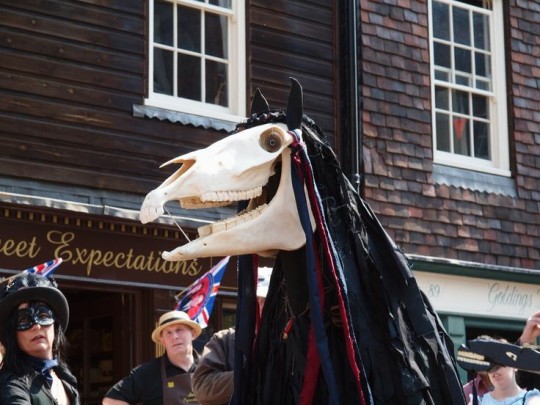
Obby Oss
"May Day traditions in southern England include the Hobby Horses that still rampage through the towns of Dunster and Minehead in Somerset, and Padstow in Cornwall. The horse or the Oss, as it is normally called is a local person dressed in flowing robes wearing a mask with a grotesque, but colourful, caricature of a horse."
learnreligions.com/paganism-wicca
207 notes
·
View notes
Text
Oh mirror of the otherworld to what depth do you call.
Far beyond the threshold yet not that far at all.
Oh mirror of the otherworld to what visions do you see.
Stars that shine like diamonds in the blackness of the sea.
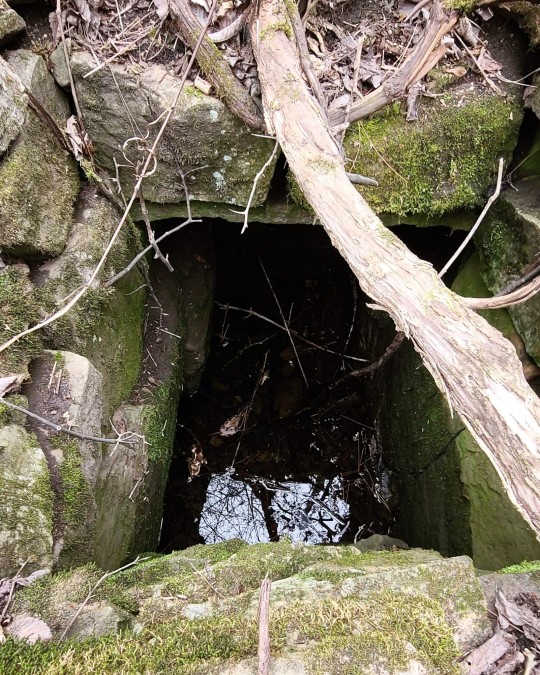
182 notes
·
View notes
Text
“Owning up to being an animal, a creature of earth. Tuning our animal senses to the sensible terrain: blending our skin with the rain-rippled surface of rivers, mingling our ears with the thunder and the thrumming of frogs, and our eyes with the molten sky. Feeling the polyrhythmic pulse of this place—this huge windswept body of water and stone. This vexed being in whose flesh we’re entangled. Becoming earth. Becoming animal. Becoming, in this manner, fully human.”
— David Abram, Becoming Animal: An Earthly Cosmology
445 notes
·
View notes
Text
I was one of those witches that try to learn all the plants and all of their correspondences only to find out that it basically means nothing. half of those plants will never grow where I am and the ones that do are so unique to this land and have their own correspondences to me personally. I basically had to relearn everything and unlearn what I thought I knew before. The plant spirits that I work with now, are ones that I see everyday that I helped nurture in the wild that I can smell and imagine in every stage of growth in my mind because I have raised them up or been with them for their entire life.
Do yourself a favour and just go out and learn what's around you and let them tell you.
i see a lot of beginner witches stressing about knowing every single herb and what all of them “stand for”/their correspondences or properties so i just want to say: it’s okay. you don’t have to know everything.
in fact, in my opinion:
deep knowledge of a few herbs that mean a lot to you > shallow knowledge of a large number herbs
you can also incorporate personal/cultural associations for herbs into your craft. for example, aside from using it for abundance, i sometimes use bay leaf for comfort/calming spells because it’s used in one of my favorite local dishes that my mom/aunts would always make.
151 notes
·
View notes
Text
How Context Strengthens Spells
Narrative Introduction in Anglo-Saxon Charms

When I was running WitchBox, I had to consistently write spells for others to perform on their own. I always contended with how much context to provide before the incantation part of the spell, where the spell caster physically speaks words. Providing context or instructions can serve as a pep talk to the person about to perform the spell. You're setting the stage for them, helping focus their intentions, and giving them confidence in the spell they are about to cast. It's a fine balance between physical actions and spoken word.
In Anglo-Saxon metrical charms, this magickal pre-amble is called narrative introduction (some scholars also refer to it as prose introduction). It provides context and mindset to the person casting the charm, and any physical actions contained within the narrative introduction are usually performed contemporaneously with the spell being spoken aloud, adding to the spell's power and intent.
In a charm called Wiþ Ymbe (Against a Swarm of Bees), we see the narrative introduction at work. It is very brief but very meaningful (as was the nature of the Old English language itself):
Throw over [the bees] some grit where they swarm, and say:
“Sit ye, my victory ladies, sit,
Sink ye down to the earth;
Never be so wild
As to fly off to the woods.
Be ye as mindful of my good nature
As is any man of meat and land.”
The charm caster is directed to throw a handful of earth onto the swarm while telling the swarm aloud that they are grounded to that spot and may not fly off into the wilderness. The charm caster's physical actions paired with their words enable them to more effectively visualize their swarm being bound to that one piece of earth, as opposed to if they had just said the words aloud with no concurrent physical action. It quite literally grounds the bee colony to cover them in a handful of earth. This must have been powerful for a medieval beekeeper, whose bee colonies lived in very simple skeps, and they had little control over when or where bee colonies would swarm.
In Wiþ Wæterælfadle (Against the Water Elf Disease), we see a much more elaborate set of instructions in the narrative introduction:
When somebody gets the water-elf-disease, their nails will turn dark, their eyes will tear up, and they’ll want to look down. Give them this remedy: carline thistle, hassock, the lower part of iris, ewe berry, lupine, elecampane, marsh-mallow sprout, water-mint, dill, lily, cockspur grass, pennyroyal, horehound, dock, elder-wood, earth-gall, wormwood, strawberry leaf, comfrey. Soak in ale, add holy water, and sing this charm three times:
"The best slaughter-band against wounds I’ve drawn,
so wounds won’t burn, won’t burst,
won't fester, grow foul,
won't throb, the wound won’t worsen,
sore won’t smolder. Let him hold the holy water,
that it sting him no more than it does land by the sea."
Sing this many times: “May the Earth weaken you with all its might and main.” You can sing this charm on the wound.
"Water elf disease" (which may have been chicken pox) must have been a serious condition, because as you can see, it requires quite a long list of ingredients to vanquish. The very act of putting this complicated herbal blend together is the first way in which the narrative introduction strengthens the charm. As a gardener and forager myself, I can tell you these plants do not all grow in the same terrain. It would take a significant amount of time and energy (or money) to collect all these ingredients. Spending those resources on creating this herbal blend in itself will amplify the charm's intent. If the resource is time spent hunting down the plants, the forager will undoubtedly meditate on why they are hunting for each plant and the person whose water elf disease they are curing. If the resource is money paid to someone like a cunning woman, that creates a financial stake in the charm, and money can have significant influence on what one wants to believe. Simply, these actions turn the charm caster into a stakeholder.
The charm then goes on to instruct the charm caster to soak the herbal blend in ale (ostensibly to bind the herbs together in a paste), add some holy water to it, and then say the incantation three times. The act of adding holy water invokes the common shared beliefs of the Christian faith at that time, and the belief in the Christian God's omnipotent, supernatural power. The charm caster then repeats the incantation three times, which not only invokes the holy trinity, but also allows the charm caster to further connect with the words as they repeat them, thus focusing their intention three times over.
The last line then has the charm caster directly speaking to the water elf disease by way of the wounds themselves. This sets the tone of the illness being a separate being from the person it inhabits. It isolates the illness, and thus weakens it. We also can assume the person who is infected with the illness--the indirect subject of the charm--is witnessing this ritual and taking its intent on board, visualizing the wounds healing in their mind's eye.
All of these forms of narrative introduction serve to strengthen the charms contemporaneously with the incantations spoken aloud. When the body works in consonance with the mind, we end up with a much more powerful version of spellcraft than if we were simply speaking aloud into the ether, without any physical actions. Determining the best balance of narrative introduction and incantation is entirely dependent on how intricate you want the spell to be, and which physical actions pair best with the spoken words.
218 notes
·
View notes
Text
Amazing!! Looks like beading !!!

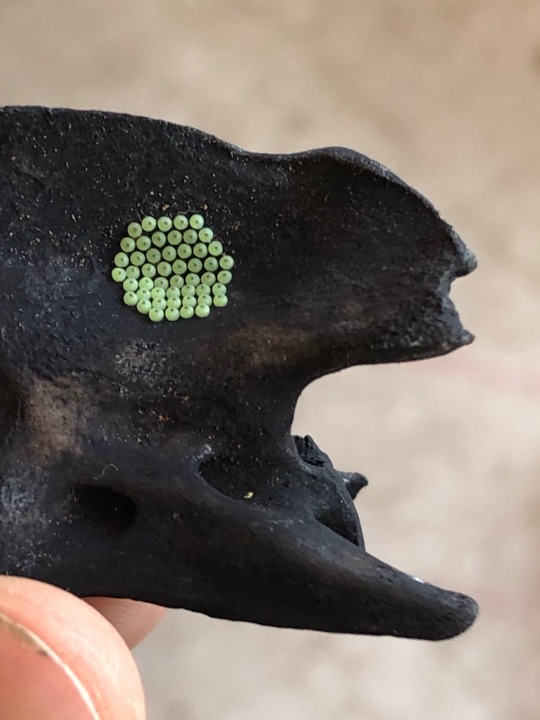
A moth or something laid eggs on one of the blackened bones from my SA/ vernal equinox rite.
Edit: HELL YEAH they’re hummingbird moth eggs aka datura’s primary pollinator
113 notes
·
View notes
Text
Somewhere
a black bear
has just risen from sleep
and is staring
down the mountain.
All night
in the brisk and shallow restlessness
of early spring
I think of her,
her four black fists
flicking the gravel,
her tongue
like a red fire
touching the grass,
the cold water.
There is only one question:
how to love this world.
I think of her
rising
like a black and leafy ledge
to sharpen her claws against
the silence
of the trees.
Whatever else
my life is
with its poems
and its music
and its glass cities,
it is also this dazzling darkness
coming
down the mountain,
breathing and tasting;
all day I think of her —
her white teeth,
her wordlessness,
her perfect love.
- “Spring” by Mary Oliver
235 notes
·
View notes
Text
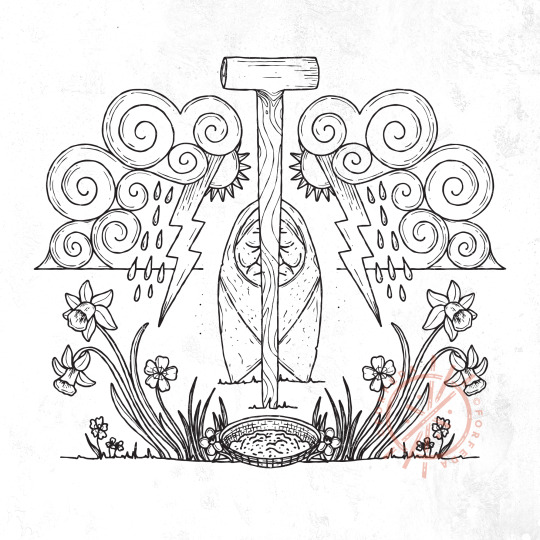
CÓNOCHT AN EARRAIGH / SPRING EQUINOX
While it's unlikely that the Equinoxes were observed as such in the ancient Gaelic nations, we find from Scotland an interesting collection of modern observations centered around the coming of spring--and featuring a magical figure who may have roots in much older practices.
Held on March 25th, Lá na Cailleach, or Cailleach's Day, signified the time that the Cailleach, the Hag of Winter, was said to make her final struggle against the warmth and growth of spring, throwing down her staff and whirling up harsh winds and wild storms, before her eventual defeat. As March 25th was originally the date for the new year in Scotland, as well as the fixed date of the vernal equinox, Lá na Cailleach served as a turning point for the seasons and signaled the onset of changes in the weather.
This design features the Cailleach's magical staff, and the Cailleach herself, now turned to stone until next winter. Also incorporated are storm clouds, spring flowers, and a basket of seeds, ready for the sowing season.
161 notes
·
View notes
Text
Ancestral & Devotional Grains
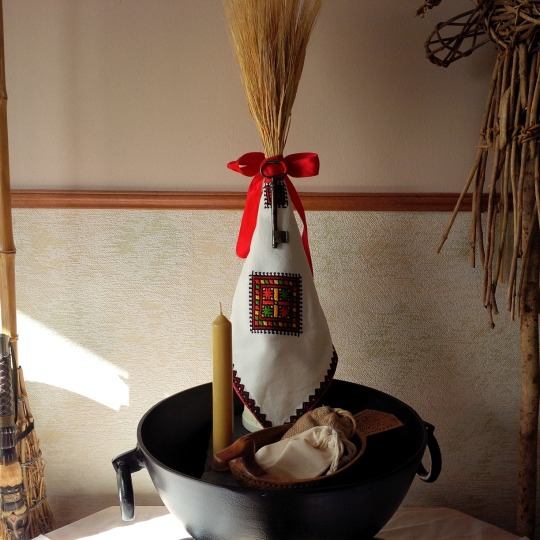


Gathering ancestral and devotional grains together for a ritual blessing before they’re sown outdoors in my container garden.
This year I’ll be growing: barley, buckwheat, corn, oats, and two types of wheat. All the grain but the buckwheat - which, despite the name, is a pseudo-cereal and not actually a grain or any variety of wheat - originates from local fields I spiritually tend.
see also: #altar, #ancestor, #grain
40 notes
·
View notes
Photo

Zachari Logan (Canadian, b. 1980), Datura, from Eunuch Tapestries, 2013. Pastel on black paper, 90 x 59 in.
3K notes
·
View notes



